HYGIENE MATTERS
A helping hand with hygiene & safety
Explore how to prioritise the health & safety of yourself & clients with REBECCA HITCHON’S roundup of expert advice & products
Flash back to 2020 and as well as Zoom quizzes and a lack of toilet roll, you’ll remember the need to regularly update your hygiene and safety knowledge, to protect both yourself and others from the Covid-19 virus. That challenging period taught important lessons about the value of health and education, particularly in relation to allergy issues caused by at-home nail kits and how to prevent the spread of viruses.
Now, there is a greater awareness of health & safety issues in society, with clued-up clients expecting professionals to follow stringent hygiene measures. Yet understanding how to access information on best practices can be challenging, as Marian Newman BEM, nail Marian Newman BEM industry veteran & founder of The Federation of “Health, safety and infection control measures have been in place for decades and are included in the National Occupational Standards (NOS). However, they are not always taught in short courses, meaning they are missed for many pros,” she says. “Codes of practice are also found behind paywalls, so are not readily available to pros or clients. The nail industry needs to work together to raise its profile and consumer confidence, with a sector-wide agreement on best practices.”

Nail Professionals (The FNP), tells Scratch.
If you’re unsure about the health & safety measures you should be implementing in your nail business – or simply want to brush up your knowledge, we’ve sourced insight from industry experts and award-winning professionals to provide a guide to workplace hygiene and safety.
Industry initiative
The Salon Hygiene & Safety Rating Scheme (SHSRS) is an initiative developed by Hygenisys Environmental Health Consultancy, with The Federation of Nail Professionals (The FNP) helping to make it a reality. Drawing inspiration from the food rating system, it demonstrates the hygiene standards of nail and beauty businesses via Bronze, Silver and Gold ratings. Evaluations cover aspects such as premises cleanliness, sterilisation procedures, waste management and product compliance. A three-month pilot scheme began in June, after which improvements are set to be made, based on findings.
Marian Newman BEM shares: “Pros can view the self-assessment form for the scheme and information on best practices via www.the-fnp.co.uk. This is the first step to discovering what the rating scheme requires. Any queries can be addressed to hello@the-fnp.co.uk.
“There are many excellent nail technicians and artists working hard to run their businesses in a professional manner, while taking care to improve the nails of their clients. These people need to be recognised, in order for confidence to be instilled in their safe and efficient services and salon operations.”
“Nail technicians should undergo regular training on hygiene and safety protocols, to ensure they are up-to-date with best practices.”
The importance of hygiene & safety
“Hygiene and safety should be considered some of the main foundations of beauty services, as they are close contact treatments,” comments Lesley Blair MBE, CEO & chair of the British Association of Beauty Therapy & Cosmetology (BABTAC). “Minimising risk and
ensuring client wellbeing is paramount to any service industry, but perhaps even more so in the beauty sector, which prides itself on improving clients’ physical and mental wellbeing.”
“Correct hygiene protocol is the cornerstone of a successful, professional and trusted nail business,” explains Coco Hocken, marketing lead for Renscene Ltd, producer of BARBICIDE® disinfectant products. “Without stringent hygiene regimes and proper tool and surface disinfection, there are risks of bacterial, fungal and viral infections spreading. This can lead to issues such as nail fungus, or even hepatitis or HIV transmission.
“A clean space enhances clients’ experiences and increases the likelihood of their return,” Coco continues. “It reflects professionalism and care, which are fundamental for building a loyal client base. Consumers now not only expect excellent services and results, but reassurance that their health & safety are prioritised.”
Katie Clark, award-winning pro & owner of KB Tool Range & Education, agrees, noting: “Customers are more likely to return to a business where they feel safe and satisfied with the service provided. Additionally, nail technicians come into contact with chemicals daily. Safety measures can help protect professionals and customers from skin contact, which can contribute to allergies and irritation.”
“The pandemic has reinforced a focus on hygiene,” says Matt Martin, INK London educator. “This can be seen via virtual consultations; stringent sterilisation protocols; using protective equipment for customers and staff; providing contactless payment options and cleaning contact points frequently, such as door handles.”
Understanding hygiene Nigel Rouse, owner of disinfectants supplier, Mundo Professional, details that hygiene can be broken down into three main areas:
• Body: “Sanitise your hands at the start of a manicure or pedicure service, and the hands or feet of your client, depending on Nigel Rouse the treatment,” advises Nigel.
• Tools and equipment: “All tools and equipment must be thoroughly disinfected in between clients to minimise the risk of cross-infection. Closely observe the contact time of the product; a quick spray and wipe is unlikely to disinfect sufficiently.”
• Surfaces: “Work surfaces should be disinfected between clients, especially those where skin contact has been made,”
Top tip
“In a professional environment, you must use suitable products – so don’t be tempted to penny pinch,” notes Nigel Rouse. “Inexpensive hand sanitisers, for example, may be inferior in quality, leave a sticky residue or unpleasant smell and dry out the skin. “By maintaining high hygiene standards, not only does this protect your clients and team, but helps prevent the spread of disease.”
“Minimising risk and ensuring client wellbeing is paramount to any service industry, but perhaps even more so in the beauty sector, which prides itself on improving clients’ physical and mental wellbeing.”
First steps
The consultation is a key aspect to ensuring safety at the nail desk. “Use this time to assess a client’s health, such as any signs of infection, allergy or skin sensitivities that are problematic, so you can tailor the appointment accordingly,” shares Coco Hocken.
“Screen clients for any contagious illnesses, and reschedule appointments for those who are unwell,” adds Katie Clark.
Lesley Blair MBE agrees that carefully assessing the health of clients’ nails and skin is crucial. “Don’t be afraid to adjust or postpone a nail treatment, if necessary,” she says. “Also, keep your nail products and equipment brand-consistent and follow the guidelines of the manufacturer, to ensure the products work as they should and to avoid allergic reactions or sensitivities.”
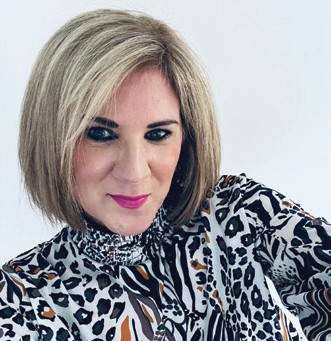
Suzanne Clayton
“Manufacturers’ guidance is vital to ensure electrical equipment is working safely, and devices should be checked regularly,” affirms Suzanne Clayton, BABTAC Beauty Collective member. “Risk assessments should also be carried out consistently to prevent hazards or accidents.”
Disinfection, sterilisation & sanitisation
“All reusable metal tools should be thoroughly sanitised, disinfected and sterilised between clients,” says Katie Clark. But what do these words mean? Cambridge Dictionary defines disinfection as ‘the process of cleaning something using chemicals that kill bacteria and other organisms that cause disease’, while sanitisation and sterilisation ensure an item is ‘completely clean and free from bacteria’.

Ifra Siddique
“Clean surfaces and workstations regularly using disinfectant sprays or wipes, so that each client is experiencing the same, hygienic environment,” advises Ifra Siddique, scientific & compliance director at The GelBottle Inc. Matt Martin adds that this cleaning process should include all touchpoints, such as hand rests, card machines, light switches and lamps.

Hannah Quilliam
“Nail techs should ensure that clients’ hands/feet are sanitised before treatments to avoid cross-contamination, and do the same for their own hands before and after each appointment,” notes Hannah Quilliam, Glitterbels educator. Katie Clark recommends using soap and water for this, but if these are not readily available, to use hand sanitisers that contain at least 60% alcohol.
Product picks
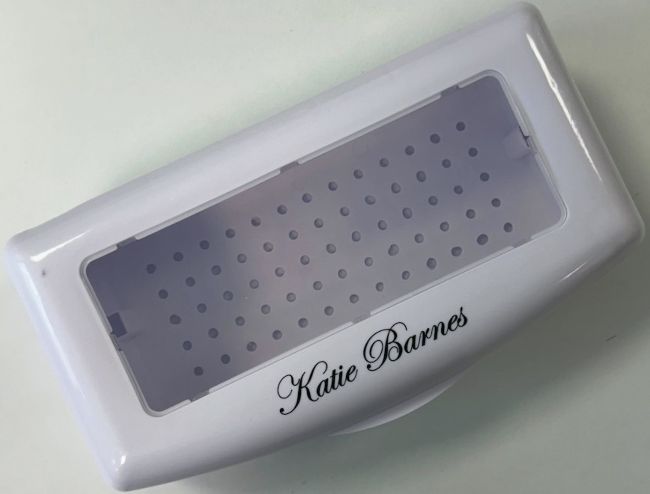
KB Nail Tool & E-file Bit Disinfection Tray
£18.99 inc VAT www.katiebarnesacademy.com
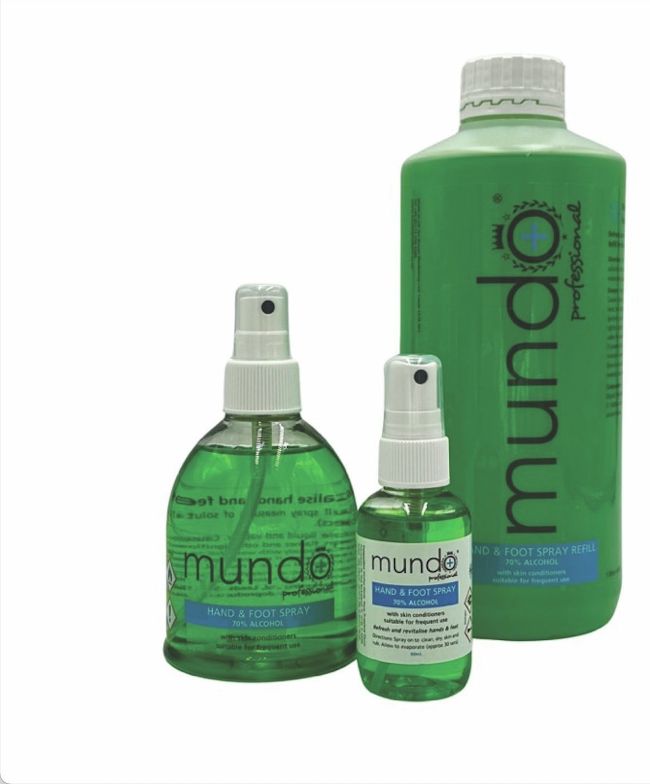
Mundo Hand & Foot Spray
from £2.50 + VAT www.mundoproducts.co.uk

Glitterbels Sanitiser Spray
£8.95 inc VAT www.glitterbels.com
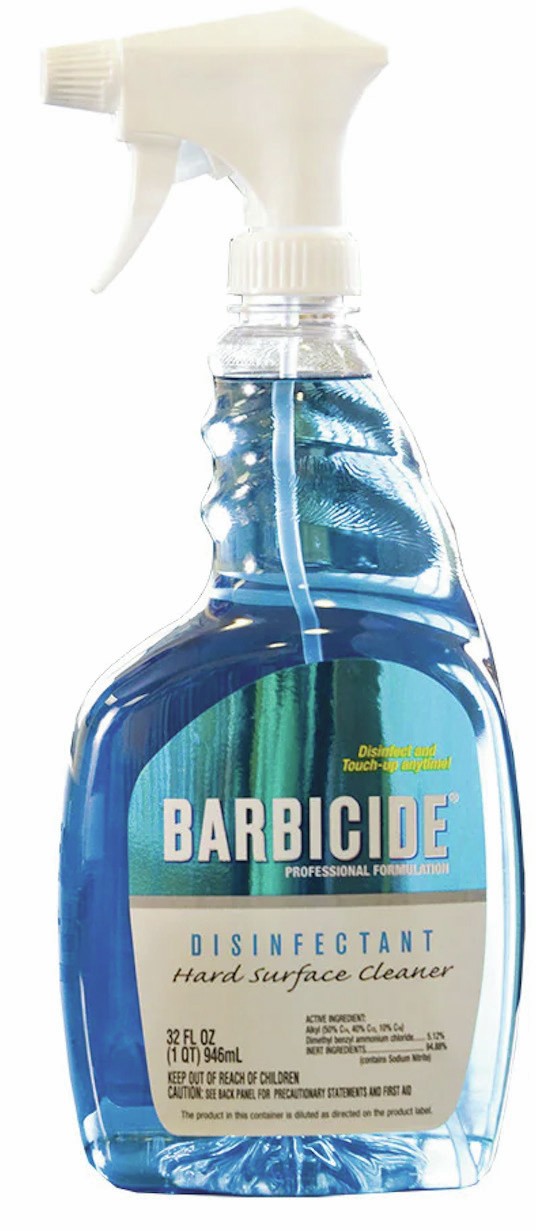
BARBICIDE® Surface Spray £POA. Available via wholesalers nationwide.
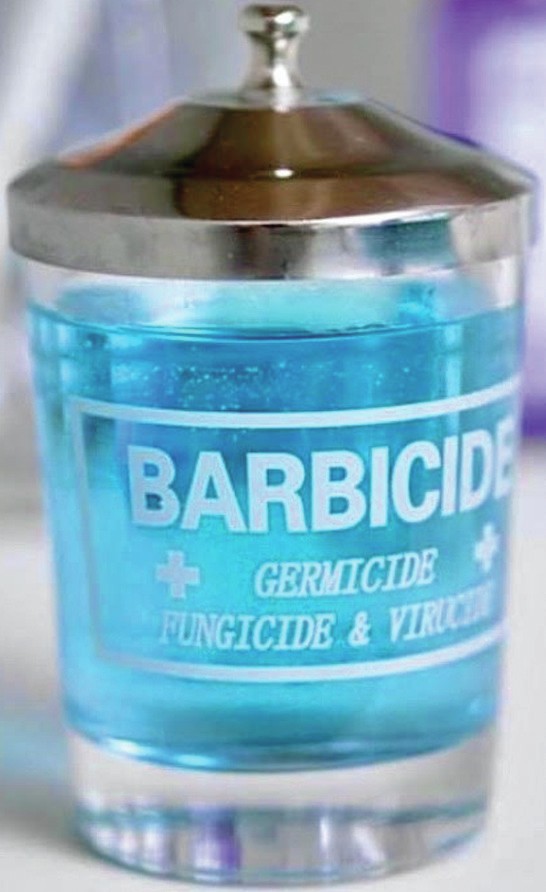
BARBICIDE® Manicure Jar £POA. Available via wholesalers nationwide.
“While COVID-19 is a viral pathogen, experts anticipate that the next pandemic will be a fungal threat, as the world becomes increasingly warmer, wetter and sicker,” shares Coco Hocken. “BARBICIDE® offers fungal efficacy that is not found in many standard disinfectant products.”
PPE
“An important safety measure that is often neglected is the proper use of personal protective equipment (PPE), particularly gloves,” details Katie Clark. “It is crucial for nail technicians to wear correct PPE to safeguard themselves from cross-contamination and exposure to chemicals that are not intended for skin contact. Nail technicians may consider wearing masks and face shields for added protection, reducing the risk of respiratory droplets spreading and inhaling substances.”
Read Katie Clark’s glove guide for Scratch by scanning here “Gloves are essential, because of the direct contact of a nail tech’s hands with a client’s skin, nails and any bodily fluids,” explains Coco Hocken. “Wearing a mask is also wise, particularly when filing nails or working with systems that exude fumes, like L&P acrylic. If working with chemicals that might splash, protective eyewear is recommended.”
Ventilation & dust extraction
“Ventilation is key, so make sure your nail space has good airflow to reduce the amount of dust and chemicals you and your clients inhale,” says Coco Hocken. “Using extraction systems and air purifiers can help to maintain good air quality.” Also make use of fresh air by opening windows if possible, advises Matt Martin.
Extraction systems protect you and clients from nail dust, chemicals and fumes entering the body via the nose, eyes and mouth, which can lead to hypersensitivity to dust, chronic obstructive pulmonary disorder (COPD) and occupational asthma over a prolonged period of time. Bacteria, viruses and fungi may also enter the air passage, resulting in an infection.
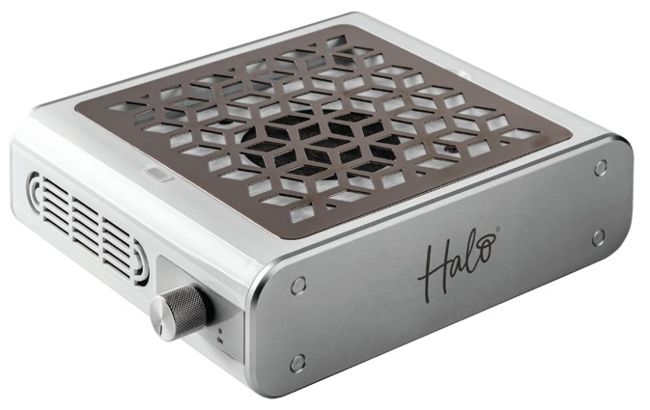
Halo Nail Dust Extractor
£229.99 + VAT www.purenails.co.uk
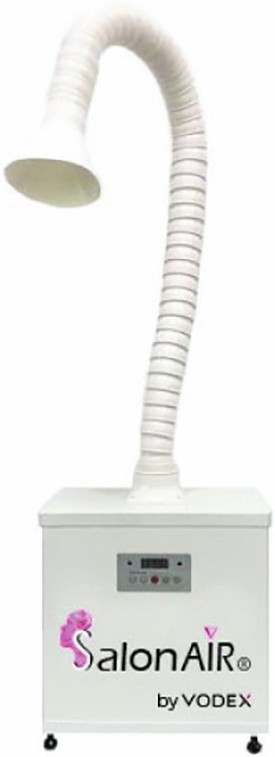
VODEX SalonAIR® 1001 from £768 inc VAT www.vodex.co.uk

Hara Professional Nail Dust Extractor
£44.99 + VAT www.astonandfincher.co.uk
Storage & disposal
“Nail technicians should store chemicals and waste products, such as used cotton balls and tissues, in containers to prevent accidental exposure or contamination,” advises Katie Clark.
Suzanne Clayton recommends storing items as per the manufacturers’ instructions. “Also remember to clean product containers before putting them away, to prevent contact dermatitis,” she notes.
Single-use tools are important for ensuring a hygienic environment for techs and clients. “Using disposable tools like nail files, buffers and orange wood sticks for each client helps prevent the spread and growth of pathogens,” explains Katie Clark.
“When disposing of tools or equipment, make sure you’re managing waste properly,” adds Coco Hocken. “Anything that’s touched bodily fluids should go into a sealed, lined bin, and follow local guidelines to safely dispose of chemicals.”

INK London Disposable Files (100, 150, 180, 240-grit) - 5 x 50pk
£79.17 + VAT www.inknails.com
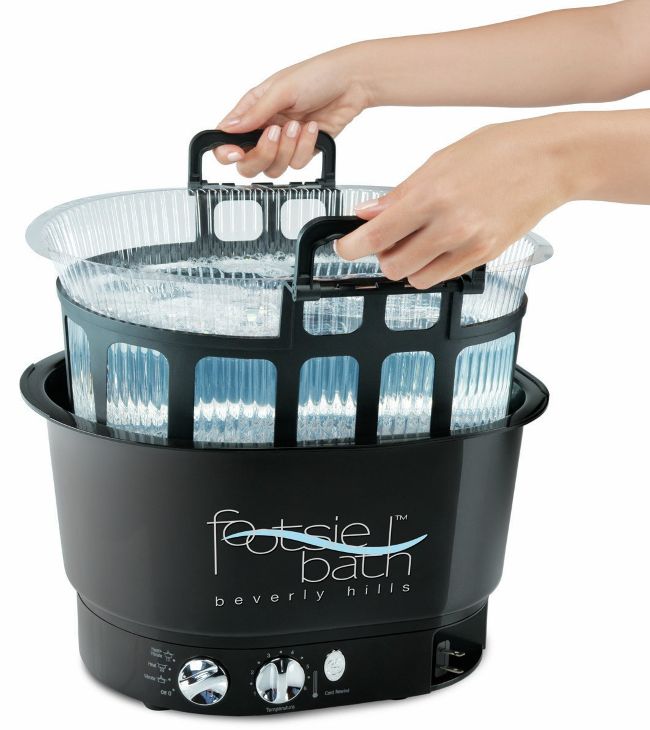
Footsie Pedicure Bath Liners(single-use & 25pk)
from £39.95 + VAT www.sweetsquared.com “Consumers now not only expect excellent services and results, but reassurance that their health & safety are prioritised.”
Education
“Nail technicians should undergo regular training on hygiene and safety protocols, to ensure they are up-to-date with best practices,” says Katie Clark.
The BARBICIDE® Certification focuses on infection control, covering terms associated with this, proper BARBICIDE® use and rules to follow. “The certification can be completed online, and by printing out and presenting the certificate, pros showcase their commitment to hygiene,” details Coco Hocken.
Mobile musings
“I have noticed a significant increase in hygiene awareness when entering people’s homes since the pandemic,” shares Stela Angelova of Stella A. – Nail Artist & Scratch Stars Mobile Nailist of the Year 2024, serving Swanley, Kent and the surrounding areas. “Clients are more conscious about cleanliness and expect higher standards of hygiene. In response to this, I’ve enhanced my safety protocols, including stricter sterilisation of tools, using more disposable items, wearing PPE and conducting health screenings. Clear communication with clients about these measures has been crucial to ensure their trust and cooperation.

Stela Angelova
“Maintaining a clean and safe environment leads to customer satisfaction and loyalty, and reflects a commitment to client care, wellbeing and professional ethics,” Stela continues. “When carrying out nail services at a client’s house, provide a consultation form to ensure all client factors are assessed. Use sterilised tools and make sure equipment looks tidy. Wear PPE such as masks and gloves, and provide masks for clients if necessary. Disinfect the work surface and ensure the area is well ventilated, and left clean. Take waste with you and dispose of it properly, as per guidelines.”
“Mobile pros are just as responsible for maintaining high levels of hygiene as those who are salon-based,” notes Nigel Rouse. “Mobile techs could consider disinfectant or sanitising skin wipes rather than sprays or gels, to minimise the risk of product spills.”
Ifra Siddique also makes product recommendations, commenting: “Mobile nail techs should carry portable sterilisation kits to ensure the cleanliness of their tools on the go and prevent contamination.”
Suzanne Clayton adds that these pros should take spare clothing with them, to always ensure a clean and professional appearance when visiting clients.
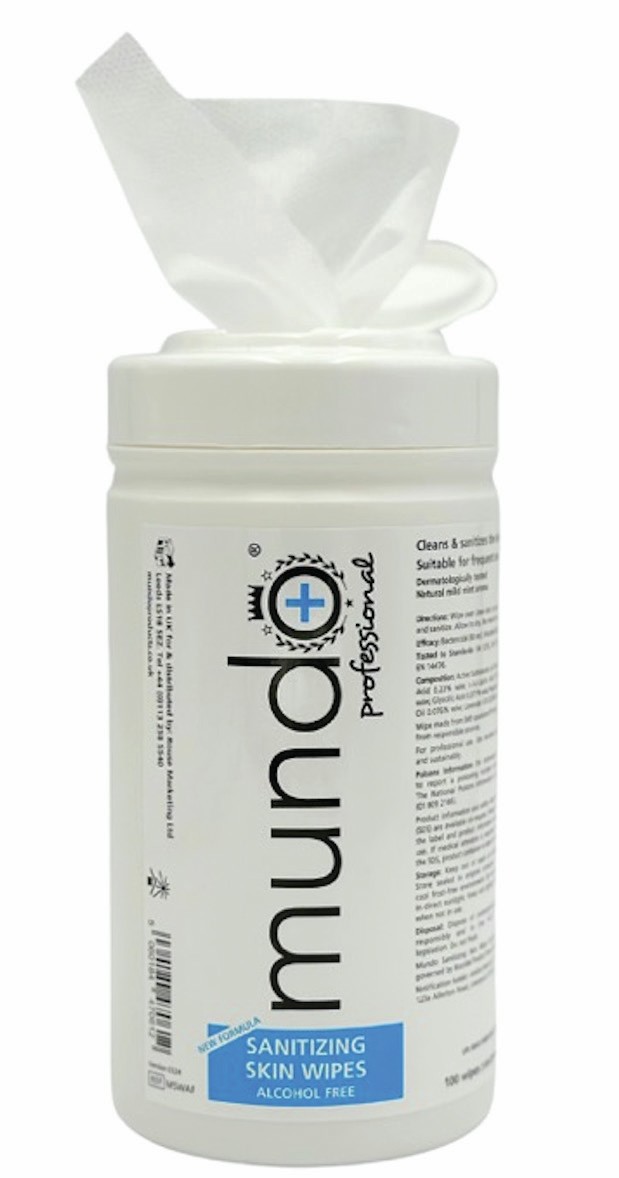
Mundo Sanitizing Skin Wipes (100pk)
£5.95 + VAT www.mundoproducts.co.uk